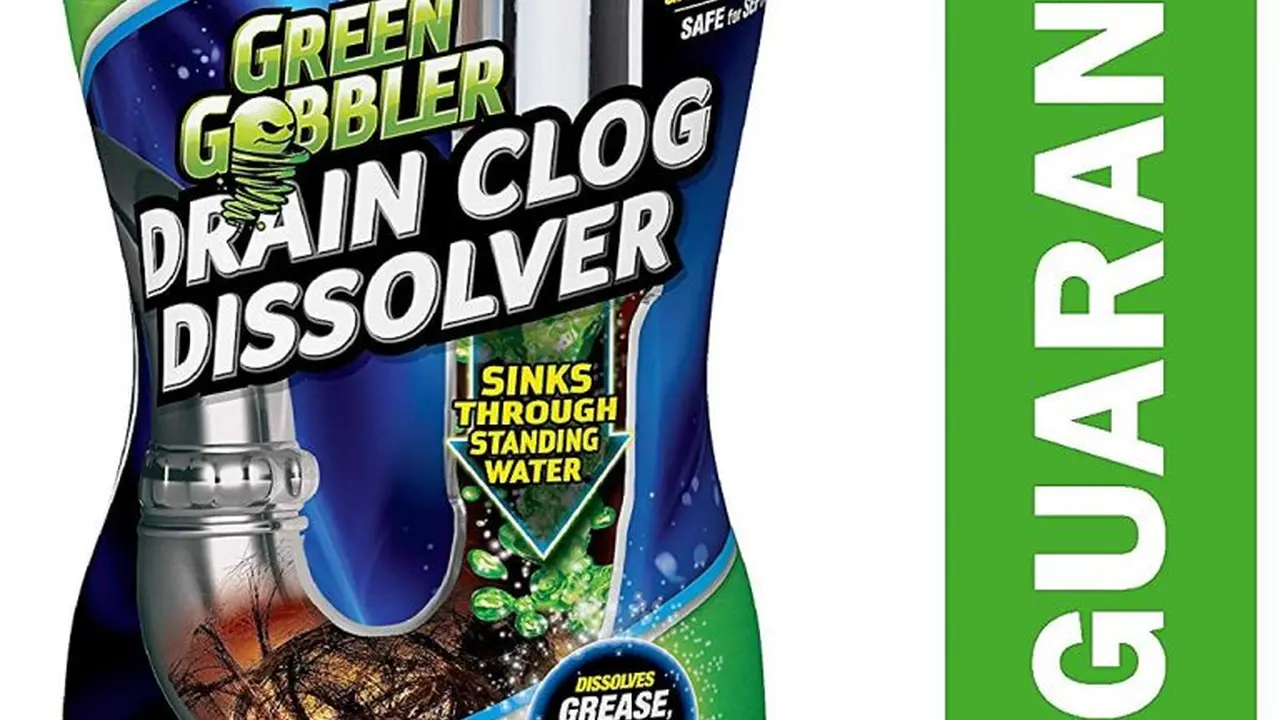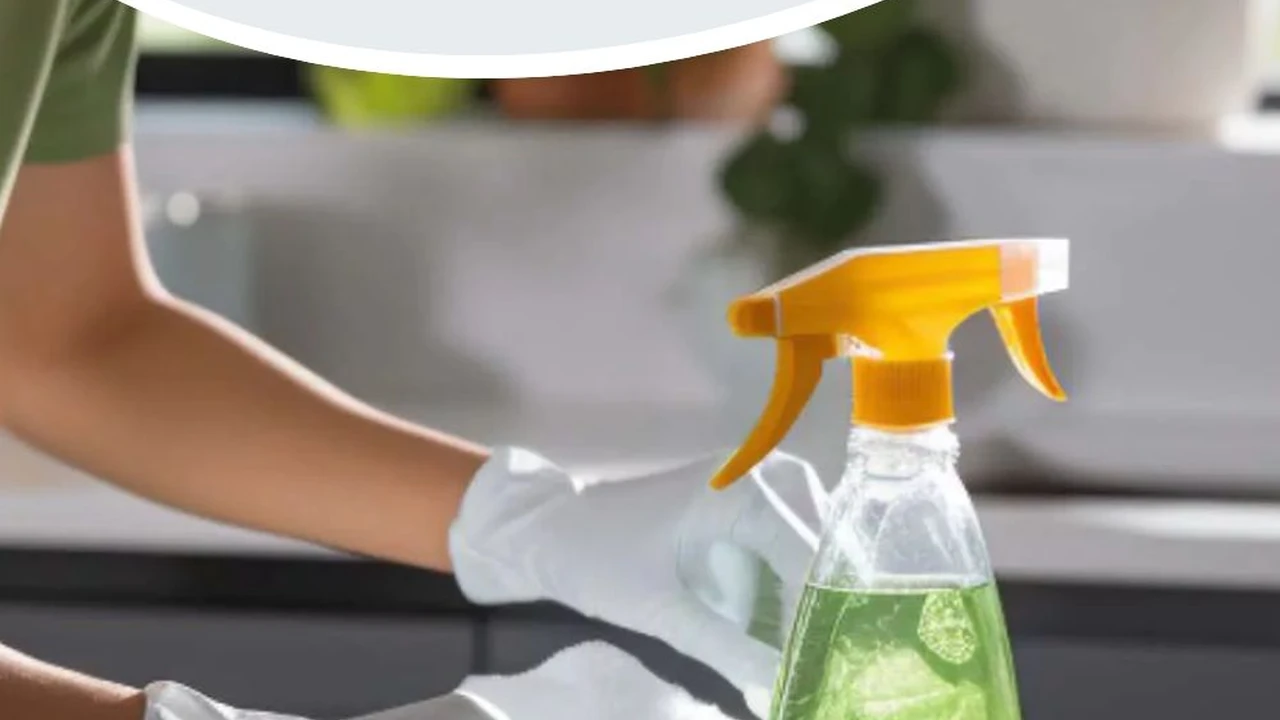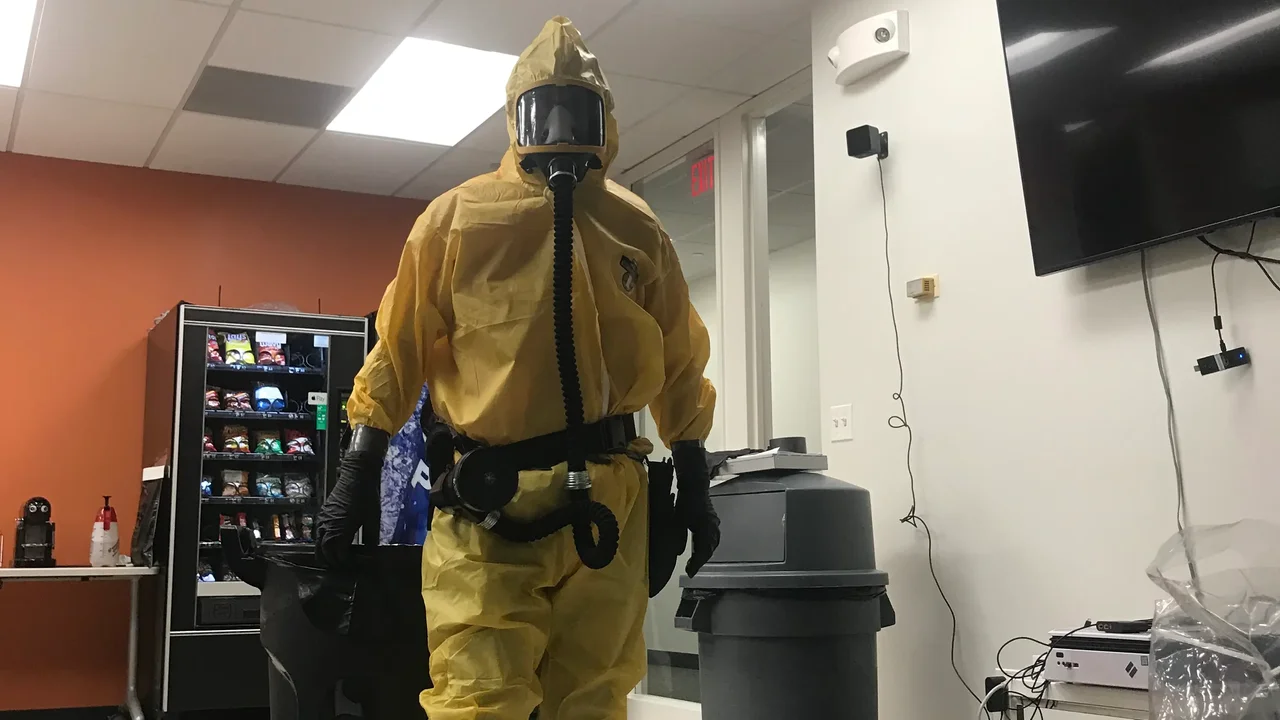Best Drain Cleaners: Unclog Drains Quickly

Understanding Drain Clogs Types Causes and Prevention Tips
Alright, let's talk about something we all dread: clogged drains. It's happened to the best of us. One minute you're washing dishes, the next, you're staring at a sink full of murky water. But before we dive into the best drain cleaners, let's understand why these clogs happen in the first place.
There are a few main culprits: hair, grease, food scraps, soap scum, and sometimes even those "flushable" wipes (hint: they're often not!). These things build up over time, clinging to the inside of your pipes and eventually forming a blockage.
Hair: This is a HUGE one, especially in bathroom sinks and showers. Strands of hair get washed down the drain and tangle together, creating a net that catches other debris.
Grease: Never, ever pour grease down the drain! It solidifies as it cools, coating the inside of your pipes and turning into a sticky, nasty mess. Always dispose of grease properly (e.g., in a jar or can).
Food Scraps: Even with a garbage disposal, some food scraps inevitably make their way down the drain. Things like coffee grounds, eggshells, and small bones can contribute to clogs.
Soap Scum: Over time, soap scum can build up in your pipes, especially if you have hard water. It creates a sticky residue that attracts other debris.
So, how do you prevent these clogs? Here are a few simple tips:
- Use drain strainers in your sinks and showers to catch hair and food scraps.
- Never pour grease down the drain.
- Flush your drains regularly with hot water.
- Consider using a bio-enzymatic drain cleaner regularly to help break down organic matter.
Liquid Drain Cleaners Chemical vs Enzymatic Solutions
Okay, so you've got a clog. Now what? Liquid drain cleaners are a common choice, but there are two main types: chemical and enzymatic. Let's break down the differences.
Chemical Drain Cleaners: These are the heavy hitters. They typically contain strong chemicals like sodium hydroxide (lye) or sulfuric acid. They work by generating heat and dissolving the clog. They're usually very effective, but they can also be harsh on your pipes and the environment.
Pros:
- Fast-acting
- Effective on tough clogs
Cons:
- Can damage pipes (especially older ones)
- Hazardous to handle
- Can release harmful fumes
- Not environmentally friendly
Enzymatic Drain Cleaners: These are a more natural and gentler option. They contain enzymes that break down organic matter like hair, grease, and food scraps. They're slower acting than chemical cleaners, but they're safer for your pipes and the environment.
Pros:
- Safe for pipes
- Environmentally friendly
- Effective on organic clogs
Cons:
- Slower acting
- Less effective on tough clogs caused by inorganic materials
- May require multiple treatments
Which one should you choose? If you have a stubborn clog and you're comfortable using chemicals, a chemical drain cleaner might be your best bet. However, if you're concerned about the environment or the safety of your pipes, an enzymatic drain cleaner is a better option. For preventative maintenance, enzymatic cleaners are generally recommended.
Best Chemical Drain Cleaners Product Recommendations Prices and Usage
If you've decided to go the chemical route, here are a few of the top-rated options on the market:
1. Drano Max Gel Drain Clog Remover: This is a classic choice for a reason. It's a thick gel that clings to the clog and dissolves it quickly. It's effective on hair, grease, and soap scum.
Price: Around $10-15 per bottle.
Usage: Pour the recommended amount down the drain, wait 15-30 minutes (or longer for tough clogs), and then flush with hot water.
Caution: Wear gloves and eye protection when using this product. Avoid contact with skin and eyes.
2. Liquid-Plumr Hair Clog Eliminator: This is specifically formulated to dissolve hair clogs. It contains enzymes and chemicals that break down hair quickly and effectively.
Price: Around $8-12 per bottle.
Usage: Pour the recommended amount down the drain, wait 15 minutes, and then flush with hot water.
Caution: Wear gloves and eye protection. Avoid contact with skin and eyes.
3. Roebic K-97 Main Line Cleaner: This is a more powerful chemical cleaner designed for use in main sewer lines. It is extremely potent and should be used with caution. It is also more expensive.
Price: Around $20-30 per bottle.
Usage: Follow the instructions on the bottle carefully. This product is designed for professional use and should only be used by experienced individuals.
Caution: Extremely dangerous. Wear full protective gear, including gloves, eye protection, and a respirator. Use in a well-ventilated area. Keep away from children and pets.
Important Note: Chemical drain cleaners can damage certain types of pipes, such as PVC and older pipes. Always check the product label to make sure it's safe for your pipes. Also, never mix different drain cleaners together, as this can create dangerous fumes.
Best Enzymatic Drain Cleaners EcoFriendly Options and LongTerm Maintenance
If you're looking for a more eco-friendly and pipe-safe option, here are some of the best enzymatic drain cleaners:
1. Bio-Clean Drain Septic Bacteria: This is a popular choice for its effectiveness and eco-friendliness. It contains a blend of natural enzymes and bacteria that break down organic waste. It's safe for all types of pipes and septic systems.
Price: Around $20-30 per container.
Usage: Mix the powder with warm water and pour it down the drain. Let it sit overnight, then flush with hot water. For preventative maintenance, use it once a month.
2. Green Gobbler Drain Opening Pacs: These are convenient and easy-to-use drain cleaning pacs. They contain a powerful blend of enzymes that dissolve hair, grease, and food scraps. They're also biodegradable and septic-safe.
Price: Around $15-20 per package.
Usage: Drop one pac into the drain and add warm water. Let it sit for 15-30 minutes, then flush with hot water.
3. CLR Clear Pipes & Drains: While CLR is known for its cleaning products, this one is specifically designed for drain maintenance using enzymes. It's a good option for regular use to prevent build-up.
Price: Around $10-15 per bottle.
Usage: Pour a measured amount down the drain and let it sit for a few hours or overnight, then flush with hot water.
Alternative Drain Cleaning Methods Plungers Snakes and Baking Soda Vinegar
Before you reach for a drain cleaner, consider trying some alternative methods:
1. Plunger: A good old-fashioned plunger can often dislodge a clog. Make sure there's enough water in the sink or tub to cover the cup of the plunger, and then plunge vigorously up and down.
2. Drain Snake (Auger): A drain snake is a flexible tool that you can insert into the drain to break up or pull out the clog. You can buy a manual drain snake at most hardware stores. There are also powered versions.
3. Baking Soda and Vinegar: This is a natural and effective way to unclog drains. Pour 1 cup of baking soda down the drain, followed by 1 cup of vinegar. Let it fizz for 30 minutes, then flush with hot water. You can repeat this process if necessary.
Comparing Drain Cleaning Products Chemical vs Enzymatic vs DIY Solutions
Let's quickly compare the different types of drain cleaning solutions:
| Method | Effectiveness | Safety | Environmental Impact | Cost |
|---|---|---|---|---|
| Chemical Drain Cleaners | High | Low (can damage pipes and skin) | High (harmful chemicals) | Moderate |
| Enzymatic Drain Cleaners | Moderate | High (safe for pipes and skin) | Low (biodegradable) | Moderate |
| Plunger | Low to Moderate | High | Low | Low (one-time purchase) |
| Drain Snake | Moderate to High | Moderate (can damage pipes if used improperly) | Low | Moderate (one-time purchase) |
| Baking Soda and Vinegar | Low to Moderate | High | Low | Very Low |
Preventative Drain Maintenance Tips and Best Practices
The best way to deal with clogged drains is to prevent them from happening in the first place. Here are some tips for preventative drain maintenance:
- Use drain strainers in all your sinks and showers.
- Never pour grease down the drain.
- Flush your drains regularly with hot water.
- Use a bio-enzymatic drain cleaner once a month.
- Avoid flushing anything down the toilet that shouldn't be there (e.g., wipes, feminine hygiene products).
- Consider having your drains professionally cleaned every few years.
When to Call a Plumber Recognizing Severe Drain Issues
Sometimes, despite your best efforts, you'll encounter a drain clog that you just can't fix yourself. Here are some signs that it's time to call a plumber:
- Multiple drains are clogged at the same time.
- The water is backing up into multiple fixtures (e.g., the toilet and the shower).
- You smell sewage coming from your drains.
- You've tried multiple drain cleaning methods without success.
- You suspect there's a problem with your main sewer line.
Calling a plumber can be expensive, but it's often the best way to resolve serious drain issues and prevent further damage to your plumbing system.
Advanced Drain Cleaning Techniques Hydro Jetting and Camera Inspections
For more severe drain problems, plumbers often use advanced techniques like hydro jetting and camera inspections.
Hydro Jetting: This involves using a high-pressure stream of water to blast away clogs and debris from the inside of your pipes. It's a very effective way to clean out even the toughest clogs.
Camera Inspections: This involves inserting a small camera into your pipes to inspect them for damage, blockages, or other problems. It allows plumbers to accurately diagnose the issue and determine the best course of action.
These techniques are typically more expensive than traditional drain cleaning methods, but they can be worth the investment if you have a serious drain problem.
DIY Drain Cleaning Tools and Equipment Recommendations
If you're a DIY enthusiast, you might want to invest in some drain cleaning tools and equipment. Here are a few recommendations:
- Plunger: A basic plunger is a must-have for every household.
- Drain Snake (Auger): A manual drain snake is a good investment for tackling hair clogs and other minor blockages.
- Wet/Dry Vacuum: A wet/dry vacuum can be used to suck out standing water from clogged sinks and tubs.
- Plumbing Wrench: A plumbing wrench can be used to disassemble drain pipes and clean them out.
Remember to always use caution when working with plumbing tools and equipment.
Understanding Drain Anatomy Pipes Traps and Vents
To better understand how drains work and how to prevent clogs, it's helpful to know a little bit about drain anatomy.
Pipes: Drain pipes are the conduits that carry wastewater away from your fixtures and into the sewer system.
Traps: Traps are U-shaped sections of pipe that hold a small amount of water. This water creates a seal that prevents sewer gases from entering your home.
Vents: Vents are pipes that allow air to enter the drain system. This prevents a vacuum from forming, which can slow down drainage.
Understanding the different parts of your drain system can help you troubleshoot problems and prevent clogs.
Seasonal Drain Maintenance Fall Leaves Winter Freezes Spring Thaws
Drain maintenance should be a year-round task, but it's especially important during certain seasons.
Fall: Falling leaves can clog outdoor drains and gutters. Make sure to clear away any leaves that accumulate around your drains.
Winter: Freezing temperatures can cause pipes to burst. Insulate your pipes to prevent them from freezing.
Spring: Thawing snow and ice can overwhelm your drainage system. Make sure your gutters and downspouts are clear so that water can drain properly.
Drain Cleaning Safety Precautions Protecting Yourself and Your Plumbing
When cleaning drains, it's important to take safety precautions to protect yourself and your plumbing.
- Wear gloves and eye protection when using chemical drain cleaners.
- Avoid contact with skin and eyes.
- Never mix different drain cleaners together.
- Use caution when working with plumbing tools and equipment.
- If you're not comfortable working with plumbing, call a plumber.
The Future of Drain Cleaning Technology and Innovation
The drain cleaning industry is constantly evolving, with new technologies and innovations emerging all the time. Some of the trends we're seeing include:
- More environmentally friendly drain cleaning products.
- More advanced drain cleaning tools and equipment.
- The use of AI and machine learning to diagnose drain problems.
- Increased focus on preventative drain maintenance.
As technology continues to advance, we can expect to see even more innovative solutions for keeping our drains clean and clear.
:max_bytes(150000):strip_icc()/277019-baked-pork-chops-with-cream-of-mushroom-soup-DDMFS-beauty-4x3-BG-7505-5762b731cf30447d9cbbbbbf387beafa.jpg)






